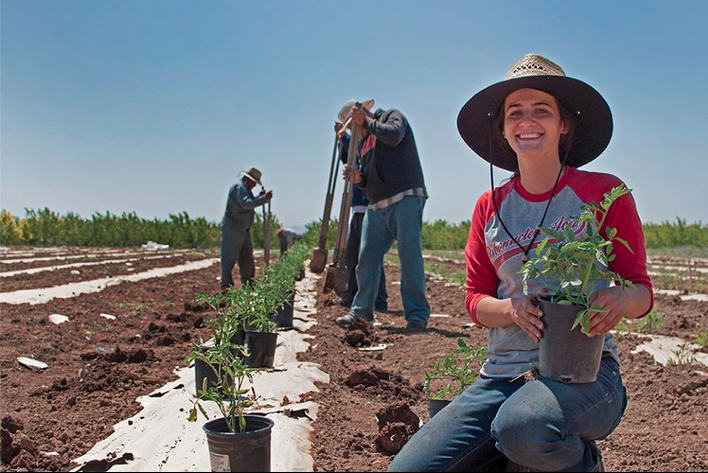THIS WEEK’S FRUIT
Kettleman Apricots
Frog Hollow Farm Named after the California town near where this apricot variety was bred and tested, the Kettleman has a hint of tartness that apricot fans love along with a beautiful aroma. It is smooth-textured and delightfully sweet.
Albion Strawberries
JW Farms, Watsonville, CA
The Albion is a newer variety strawberry developed at UC Davis. Straw- berries are early this year! The sweet flavor and firm flesh makes the Albion an excellent dessert or preserving berry.
Hayward Kiwis
Chiechi Farm, Live Oak, CA
Originally known as the Chinese gooseberry due to its Chinese origins. Hawyward Wright, a New Zealand nurseryman propagated his plants by grafting, and they eventually became the preferred cultivar of growers due to their sweet flavor and thin skin.
Hass Avocados
Eco Farm, Temecula, CA
Creamy in texture, nutty in flavor, with a small to medium seed. The Hass skin is easy to peel and darkens from green to purplish-black as it ripens
Navel Oranges
Purity Organic, Kerman, CA
California Navel Oranges are considered to be the best Navels for eating out of hand. They have a thick skin that is easy to peel, are seedless and have a meaty make them great for out of hand eating too.
Ruby Grapefruit
Sundance Organic, Oceanside, CA
The Grapefruit is said to cross between the Jamaican sweet orange and the Indonesian pomelo, first documented in 1750. Ruby grapefruit was an accidental discovery of a red fruit growing on a pink grapefruit tree.
Valencia Oranges
Pleasant Valley Ranch, Springville, CA
Valencia Oranges are known for their very sweet tasting and brightly colored juice. They are one of the most popular varieties used for bottled juices because of this. Their sweet, bright flavor and minimal seed content (1-6 per orange) and sweet flesh that makes them a perfect snack.
A NOTE FROM MARLENE
Things are picking up quickly on the farm these days. The long spring days and warm, even hot, weather are making things grow faster and requiring more water to make sure seedlings don’t dry out. We have thousands of veggie plants, about half of which have gone into the ground in the last couple weeks.
Last summer, we had about an acre of peppers and tomatoes. This year, we’ve doubled that. It’s been a challenge to figure out how to maximize our space within our tiny greenhouse and our makeshift hoop house to accommodate all these plants. We’ve also increased our diversity in the field, adding in flowers, melons, and squash.
In preparation for transplanting, we’ve been improving our set up in the field. Christophe had been monitoring for several months a special compost pile which had been made specifically for the vegetables. This balance of ingredients helped to give the compost a more bacterially dominate environment.Unlike the fruit trees which prefer a fungal dominate compost, most vegetables prefer a bacterially dominate one. These beneficial bacteria are symbiotic with the vegetables and help them absorb nutrients from the soil. Additionally, the compost helps to build a healthy soil ecosystem for years to come through the slow release of nutrients and support of habitat and food for microorganisms.
After we put the compost out, we laid out our drip irrigation and a heavy paper mulch. The compost and the mulch will help the water spread over a greater area and retain moisture. Then Kristin and I measured out where each plant will go and marked it on the paper. A small hole was cut through the paper where the transplant will go and a hole dug. One of Al’s friends is a tomato growing expert, and we picked up a useful tip from him: fill the hole you’ve dug with water so that the ground around the transplant is totally saturated, keeping the plant from any stress of under watering and making the soil more welcoming for root establishment.
The field is already filling up with big red slicing tomatoes, a sweet early girl variety, and classic heirlooms like purple cherokee. We’ve got more jalapeños, anchos, and sweet peppers coming too. In the kitchen, Anna is gearing up to start test recipes before she is swimming in tomatoes. Right now, she is dreaming of salsas, hot sauces, and roasted peppers. I can’t wait for her to start cooking, so I can be a taste tester! We look forward to sharing our tomatoes and new products with our CSA members.
Soon the fruits of our labor will be apparent!

 Follow
Follow

